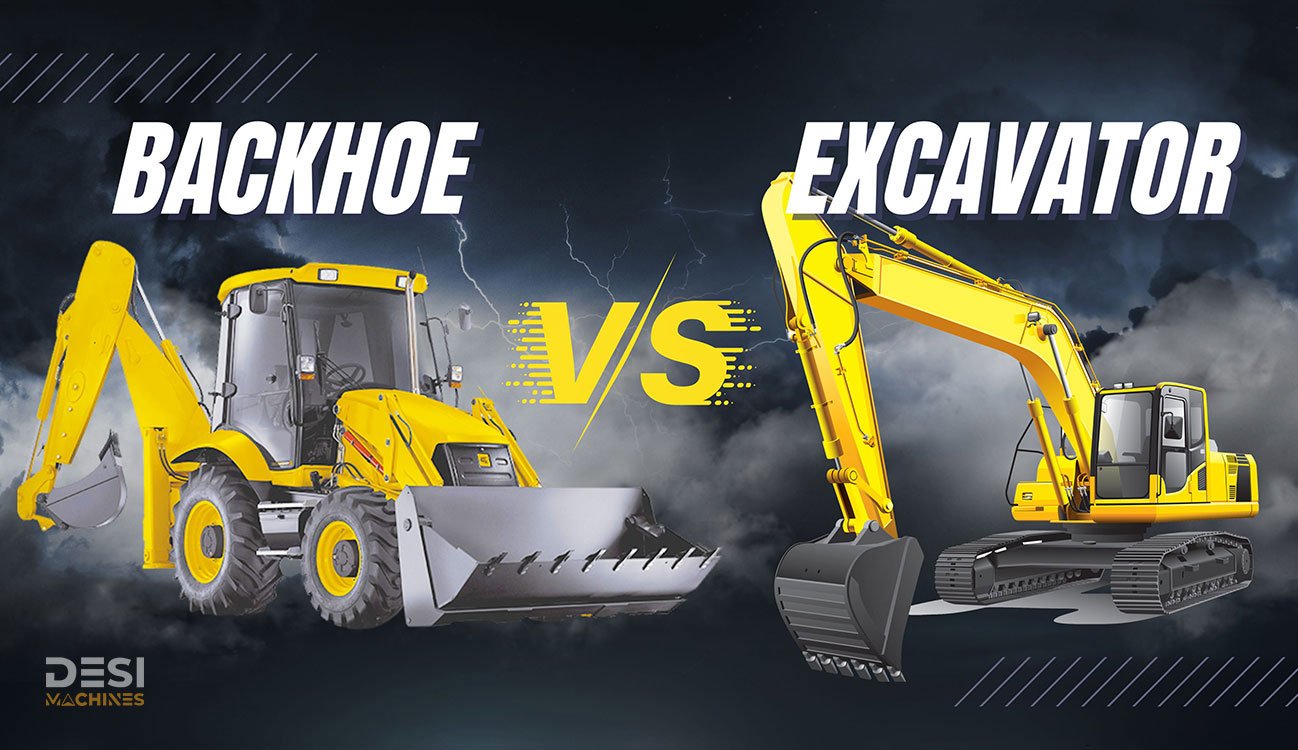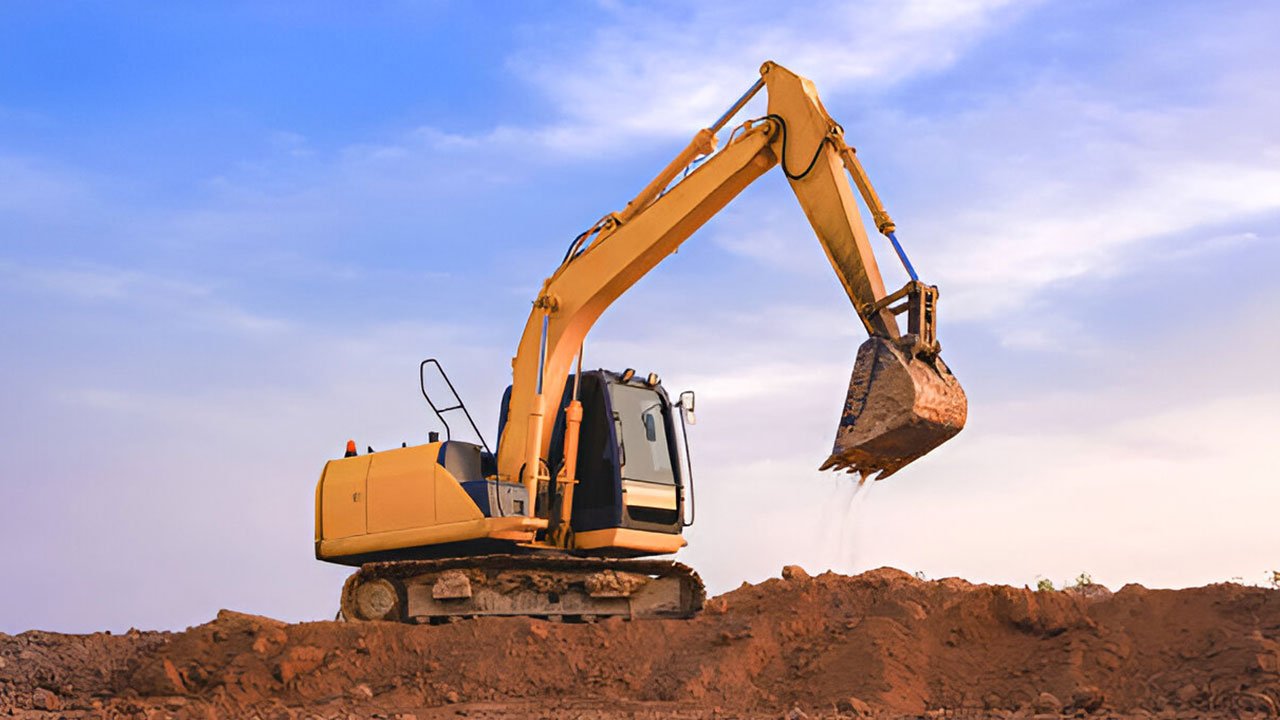
By Puloma Nath
Jan 20, 2025
( 0 )
Backhoe loaders and excavators are machineries that are very prominent in the construction and mining industries. These machines are used for digging, moving materials, and for demolition purposes. Both machines seem to be similar but have different utility. It depends on the contractors and project managers to widely deploy machines identifying the job type to maximize output. Both differentiate themselves in terms of design and functionality and the type of tasks they are made to do making them unique in their domain.
In this blog, we will see more clearly the differences between backhoe loaders and excavators. We will also look at the factors that determine the right equipment for different jobs. The idea is to make you more informed and knowledgeable about the equipment’s application.
A backhoe loader is a multi-functional machine in the construction and mining sectors. It comprises three tools: a loader, a backhoe, and a tractor. A loader is a bucket-like attachment that is attached in front and is generally used for scooping, lifting, and moving things like soil, debris, gravel, sand, and garbage from one place to another. The backhoe is a teeth-like arm attached to the rear of the machine and is generally used for trenching, digging, moving heavy machinery, and breaking asphalt or heavy rocks. The tractor is in the middle and is used to operate the backhoe and the loader.
The design of a backhoe loader is compact, which enables it to move in a tight space. Hence, its compactness and multifunctional ability make it a popular choice for a wide range of jobs.

An excavator is particularly designed for digging and excavation purposes. It comprises a boom, an arm, and a bucket attached to the rotating cab. Excavators are generally more powerful machines and are generally used for heavy works like trenching, mining, and demolition purposes. They are built to dig deeper and can lift larger loads. Most excavators are equipped with tracks, which are commonly called crawlers. Crawlers expertise in working in challenging conditions like construction sites, demolition sites, and mining operations. Excavators can also be fitted with a wide range of specialized attachments, including hydraulic breakers, augers, and grapples, giving them versatility in various industries.

Despite similar-looking equipment and both being used in excavation work, they have some fundamental differences.
| Key Differences | Backhoe | Excavator |
|---|---|---|
| Design and Structure | The backhoe loader’s structure comprises a loader bucket at the front and a backhoe arm at the rear, all connected to a wheeled base in the middle. The dual utility makes it popular for diverse scopes of work like digging, loading, material handling, and light demolition. The wheelbase makes it easier to manoeuvre in tight spaces ideal for tight spaces. | The excavator on the other hand has expertise in intensive deep digging. It comprises a boom, an arm, and a bucket mounted on a rotating cab. Excavators come in tracks and wheels. Track excavators are also called Crawlers. Crawlers are well known for their work in uneven and rough terrain especially in hilly regions. They are used for large-scale operations like demolition, trenching, moving materials, etc. with precision. |
| Size and weight | Backhoe loaders are in the range of between 4 and 10 tons, depending on their size and configuration. Smaller models weigh about 4 tons, whereas the largest may weigh very close to 10 tons. These machines are utilized for operations including excavation, lifting, backfilling, and trenching, mostly used in the fields of the construction industry, landscaping, and agriculture. | Excavators come in various classes, each suited for specific tasks. Mini excavators (0-6 tons) are used in confined spaces like landscaping. Small excavators (6-15 tons) are for urban projects and moderate digging. Medium-sized (15-25 tons) handle construction and roadworks. Large excavators (25-50 tons) are for heavy earthmoving, while extra-large (50-1000 tons) excavators serve mining and massive excavation. Long-reach excavators assist with deep digging, and wheeled excavators excel in road construction and city work. |
| Mobility | Backhoe loaders are small, compact, and mounted on wheels which makes it easier to transport from one place to another. This decreases the transportation cost, reduces downtime, and increases productivity. | Excavators on the other hand require transportation as most are equipped with tracks. These on the one hand make its expertise in working in uneven terrain and increase stability while on the other hand increasing transportation costs. |
| Versatility | Backhoe loaders are versatile for their size and compactness. It can be used in multiple types of work from digging, loading, material handling, and even light demolition which makes it popular for working in smaller spaces. | Excavators are generally used for excavation works only. They are versatile as they come with various attachments. Attachments like hydraulic breakers, augers, and grapplers can be added to perform tasks like demolition, digging dip holes, and heavy lifting. |
| Digging Depth and Reach | Backhoe loaders are used for moderate digging and expertise in digging trenches. They are used to do shallow excavation and small-scale projects like landscaping and digging for utility installation | Excavators on the other hand are used to dig deeper with more engine power and ability compared to backhoe loaders. They are used in large-scale trenching, mining, or foundation work. |
| Applications | Backhoe loaders are generally used for small and medium-scale projects like urban construction, landscaping, road maintenance, utility installation, and agricultural tasks. They have expertise in mobility and multifunctionality which enables them to work in urban settings where space is limited. They are used to lay pipes, dig shallow trenches, and move materials around job sites. | Excavators are versatile machines designed primarily for digging. Often used in construction, mining, demolition, and landscaping, excavators perform functions like digging holes, trenching, material handling, and lifting. With a variety of attachments available, they are ideal for digging foundations, clearing debris, and grading, and they have become indispensable in big infrastructure jobs and site preparations worldwide. |
| Operator Skill Requirements | Backhoe loaders are small and easy to operate. Basic training is necessary for the operation. It has simpler control and more intuitive designs. | Excavators on the other hand require knowledge and skills because it is larger and have various attachments. The knowledge and skills to work with various attachments are necessary to operate an excavator. So, experience and skill are required to operate an excavator while doing precision jobs. |
| Cost and Maintenance | On the other hand, backhoe loaders are less expensive for their design and size. They are economical in terms of acquisition and maintenance. They are fit for smaller projects like urban landscaping, small-scale digging and trenching, etc. | Excavators are expensive for their larger size and attachments but they have multiple uses as they can be equipped with multiple attachments and possess the ability to work on uneven and rough surfaces as they are equipped with tracks. So, it’s best suitable for large-scale projects where high power and performance are necessary. |
Backhoe loaders and excavators are very essential in construction industries. While backhoe loaders offer versatility, mobility, and cost-effectiveness, excavators excel in deeper digging, power, and stability. Backhoe loaders are more suitable for small-scale operations, and excavators are suitable for large-scale construction, demolition projects, and mining activities.
Both machines have their own unique ability, features, and expertise in their domain. Depending on the project manager to choose the right machine for the right job is very much required for maximum output. One has to keep in mind the cost-effectiveness of both machines in terms of scale of operations.
Top 5 Backhoe Loader Brands in India – Popular Models & Their Price
Apr 17,2025
© 2025 Desi Machines All rights reserved.
Designed & Developed by PromotEdge
Desi Machines is a platform where you can see and compare construction equipment. It showcases images, brochures, features, technical specifications, brand details & dealer information. All these are taken from respective brand websites, brochures, and other public resources. We do not claim ownership of these materials and strive to ensure their accuracy. However, the disparity may happen and we advise users to verify directly with respective brands and dealers. Desi Machines is not liable for any inaccuracies or reliance on the information provided. Use of this website is at your own discretion.